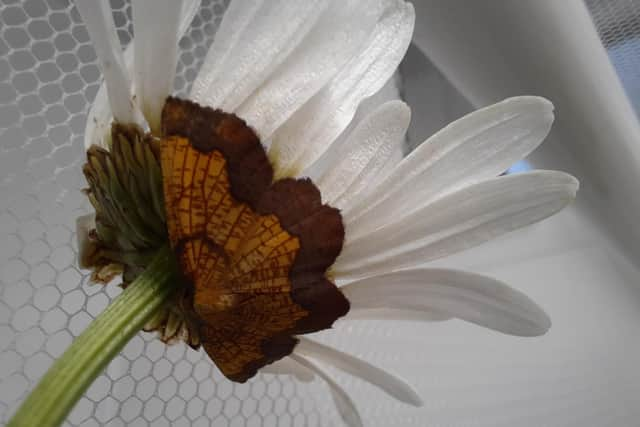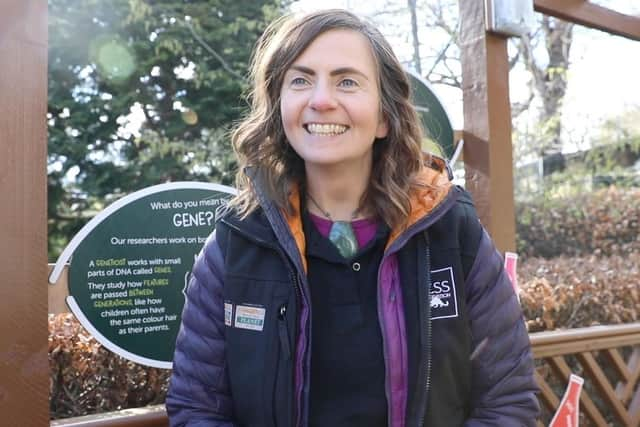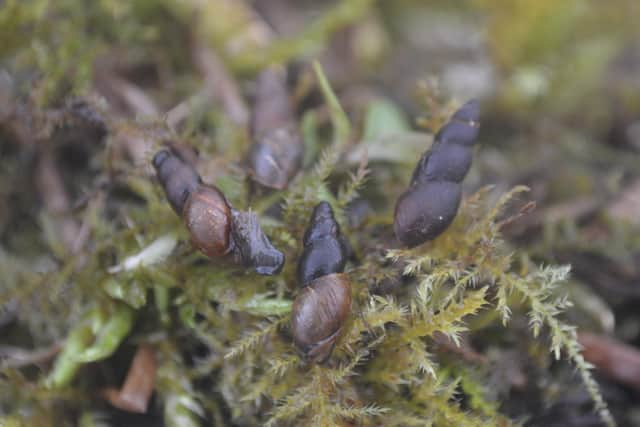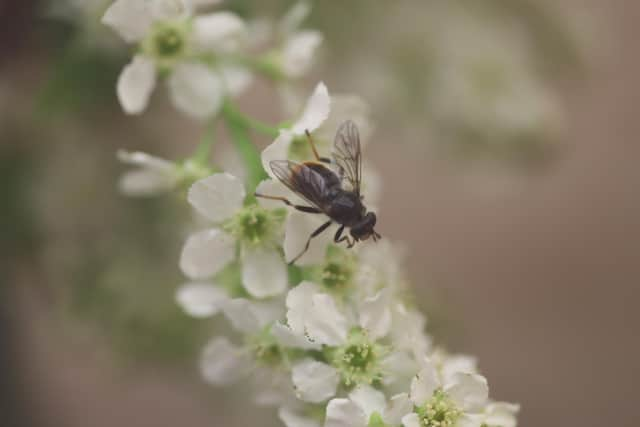How the 'breed and release' approach is keeping Scotland's wee bugs and beasties alive
Tigers, elephants, polar bears and gorillas could be classed as the celebrities of the endangered animal kingdom, with their struggle for survival well known globally.
But there are many other threatened creatures which are tiny, slimy or less obviously beautiful that are just as important – or more so – in the grand scheme of life on earth.
Advertisement
Hide AdAdvertisement
Hide AdTake the miniscule and very rare pond mud snail, found only in a handful of sites in the UK.
Dwelling in the muddy bottoms of peaty ponds and measuring about the size of a pinky fingernail, it is not exactly grabbing the limelight. But it plays a crucial role in recycling nutrients into the landscape, benefiting other wildlife that lives alongside.
Or what about the pine hoverfly?
It once thrived in pinewoods across the country but today is one of the rarest species in Scotland, existing at just one site. However, it provides crucial pollination services for plants in its habitat.
Few folk know more about these “little guys” than Dr Helen Taylor, conservation programme manager for the Royal Zoological Society of Scotland (RZSS), who is working to boost the survival chances of both these species and others using a ‘breed and release’ approach.


“The important thing to remember is that often these wee insects and invertebrates are the things holding our ecosystems together,” she said.
“The only reason we have healthy forests or lochs or any of the other landscapes we have is because there are invertebrates in there doing really important jobs – whether it’s pollinating plants or breaking down waste and recycling nutrients back into the environment.
“So if we lose them we’re going to lose the jobs they are doing and those ecosystems will stop functioning.
“We do other large fluffy species at RZSS, like wildcats and beavers, and that’s fantastic – those animals are super-important too.


Advertisement
Hide AdAdvertisement
Hide Ad“But if you want healthy landscapes to put those fluffy animals back into then you’ve got to look after the little guys as well.”
The RZSS charity, which runs Edinburgh Zoo and the Highland Wildlife Park, has pledged to reverse the decline of 50 species by 2030 as part of its latest strategy.
It is leading important conservation work in Scotland and worldwide, including the ‘breed and release’ programme aimed at rescuing the Scottish wildcat from extinction, and wildlife projects in the likes of Brazil and Uganda.


Efforts cover a wide range of animals, from Scottish capercaillies to various antelope species, snake-necked turtles, chimpanzees, giant anteaters and giant armadillos.
Despite the dramatic differences between the creatures involved in the schemes, Dr Taylor says many of the methods used to improve their chances are the same.
“Here in Scotland, with the invertebrates and with the wildcats, what we’re dealing with is animals that have lost a lot of their natural habitats,” she said.
“Now habitat restoration is starting to happen but these animals need to be put back into that environment and so the best way to do that is to breed them here at our Highland Wildlife Park site or at Edinburgh Zoo and then get them back into the habitat that’s being restored.
“The challenges being faced by animals like pine hoverflies and dark-bordered beauty moths and then large animals like wildcats are actually very similar, and what we’re doing is very similar – it’s just at a very different scale.
Advertisement
Hide AdAdvertisement
Hide Ad“Last year 22 wildcat kittens were born and we bred 8,000 pine hoverfly larvae – our guys are a little bit smaller and so it’s harder to get attention for them but they’re just as important, if not more so.”


And sometimes it’s difficult to know if reintroduction efforts have been successful because it can be hard to find the evidence.
“Pine hoverflies are relatively easy to keep tabs on but the pond mud snail is a good example of a trickier one" she said.
“We did a release of the snails back in 2018 and had been monitoring the release site ever since. However, we had not managed to find the creatures at that site until two months ago – so it took us five years to confirm they had survived and it was the right release site.
“With those guys it’s just needle-in-a-haystack stuff because they’re so tiny.”
Other times the proteges end up us a meal for other critters – bringing a new meaning to ‘the dog ate my homework’.
“Yes, all the invertebrates we work with will be part of wider food chain for sure,” Dr Taylor said.
“That’s nature, unfortunately, so we have to make our peace with that.
Advertisement
Hide AdAdvertisement
Hide Ad“It’s a numbers game. We released 6,000 pine hoverfly larvae this year so the hope is that enough of them are going to survive to establish and get that population off the ground and put it in a much more secure position.”
RZSS has teamed up with the Royal Society of Edinburgh for a new series of events kicking off in the capital weekend.
Dr Tayor is appearing at the inaugural session of RSE Investigates…Conservation on Thursday, treating audiences to the inside story on her team’s work.
Entitled Standing Up for the Little Guys, the talk will cover both the serious and some of the more light-hearted elements of her job.
“People can expect to find out why these animals are so important and why I’m so passionate about them but also some of the challenges involved in conserving them and caring for them,” Dr Taylor said.
“They will also hear about some of the work my team does every day, working extremely hard to save these tiny wee beasties, as well as some of the ridiculous situations we find ourselves in trying to look after them.”
Comments
Want to join the conversation? Please or to comment on this article.